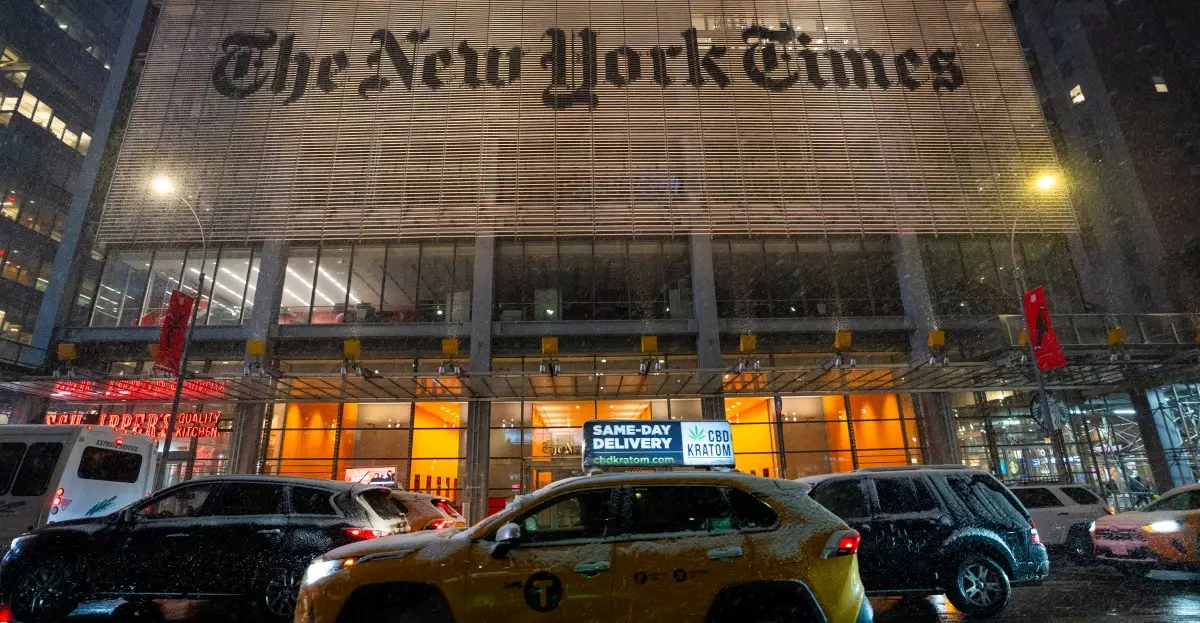In an era where technology is advancing at an unprecedented pace, the need for news organizations to adapt is essential. The integration of artificial intelligence (AI) into journalistic practices is reshaping how newsrooms operate. The New York Times, a seminal player in the field, is reportedly embracing AI tools to enhance its editorial workflow, stirring a mixture of curiosity and concern within the industry. Staff members are encouraged not just to leverage AI for basic tasks, but to adopt various AI tools in an array of capacities—ranging from editing and composing engaging headlines to curating questions for interviews.
The world of journalism is no stranger to technological transformations, but the rapid adoption of AI introduces a unique set of challenges. While it promises efficiency and innovation, it simultaneously raises questions about the integrity and originality of journalistic content. The reported training of employees in using AI highlights a pivotal moment in the evolution of news reporting, showcasing an organization aiming to stay ahead in a competitive landscape—yet it can be seen as an unsettling shift for traditionalists.
Along with the enthusiasm surrounding AI’s potential, The Times has articulated strict guidelines concerning its application. While journalists are encouraged to use AI for enhancing their work—notably through a tool known as Echo, which aids in summarizing and generating promotional content—there’s a codified reminder that the essence of journalism should remain intact. AI cannot dictate the narrative; it is merely a tool to support the creative process. There are hard limitations, including restrictions on using AI to draft significant portions of articles or alter them beyond minor edits.
This cautious approach signifies a commitment to maintaining journalistic standards amid technological advancements. The reassurance that “Times journalism will always be reported, written, and edited by our expert journalists” serves to quell fears regarding the erosion of quality and accountability in news reporting. The memo underscores the notion that while AI can facilitate processes, the ultimate responsibility of content remains anchored in the hands of seasoned journalists.
One of the most critical aspects of traditional journalism is the human element—the unique perspectives, ethical considerations, and emotional intelligence that journalists bring to their work. Even with the emergence of generative AI tools, The Times has reiterated the importance of human oversight in the journalistic process. The caution displayed by the outlet reflects an acute awareness of the potential pitfalls of AI, such as misinformation, loss of depth, and lack of empathy in storytelling.
Generative AI may streamline the factors of producing articles or researching topics, but it cannot replicate the intrinsic insights that come from human experiences and societal interactions. The industry acknowledgment that AI should complement rather than replace human intuition indicates a desire for balance—a subtle acknowledgment that while technology can enhance productivity, it cannot supplant the authentic voices that speak to audiences and shape public discourse.
The embrace of AI by The Times is not an isolated phenomenon; many news organizations are incorporating AI tools into their operations. The spectrum of AI usage ranges from basic spellcheck software to complex systems that generate content autonomously. However, each organization faces the challenge of navigating this landscape while upholding journalistic ethics and integrity. The legal disputes involving The Times and major AI firms like OpenAI and Microsoft further emphasize the complications inherent in this technological evolution.
As the industry grapples with incorporating AI, it faces a crucial question: how do we balance innovation with the core values of journalism? Utilizing AI must not lead to a compromise on the careful curation of news, and organizations must remain vigilant in defining ethical standards that govern its use. As more outlets experiment with AI, the industry must foster a collective dialogue on best practices, ensuring that the adoption of technology enhances rather than undermines journalistic integrity.
The integration of AI into journalism holds transformative potential but also demands careful consideration of ethical implications. The New York Times’ cautious foray into AI applications serves as both a beacon of hope and a warning signal for the industry. As the conversation around AI in newsrooms continues to evolve, maintaining the delicate equilibrium between human intuition and technological advancement will be paramount in upholding the tenets of quality journalism in this new era.

